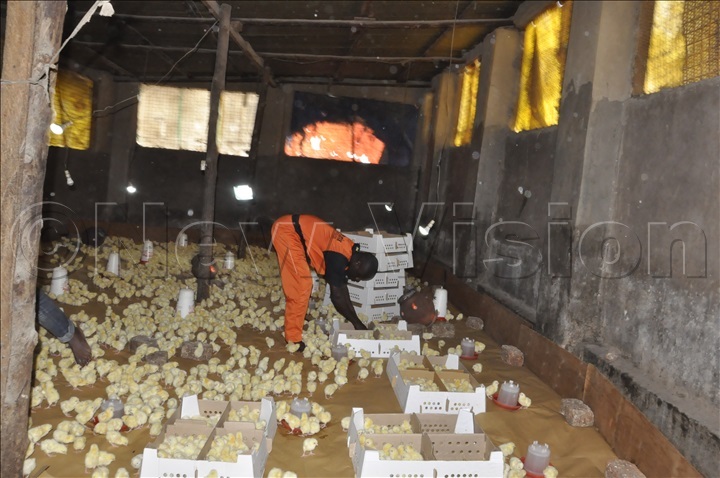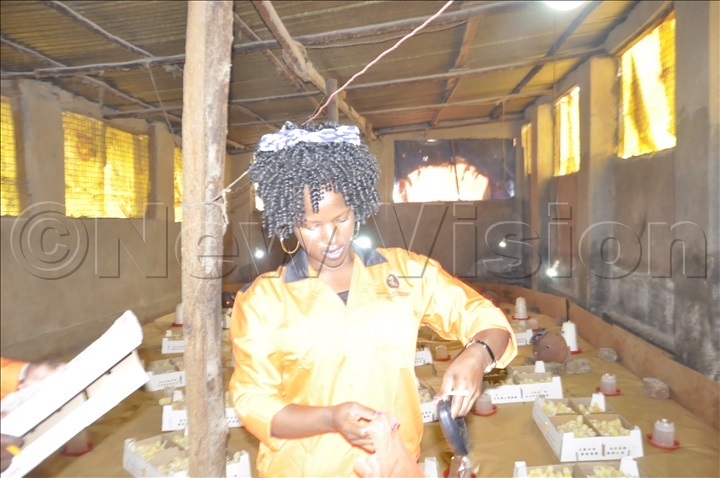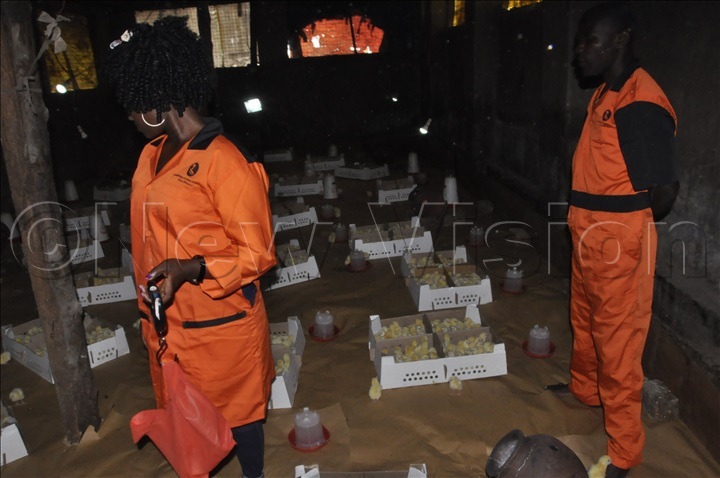Brooding Set-up: why it must be done properly
By Chris Magezi
There are two methods of brooding chicks;
• 1. Spot Brooding (canopy or radiant heaters, pots etc). The heat source is local so chicks can move away to cooler areas and thus select for themselves a preferred temperature.
• 2. Whole-House Brooding. The heat source is larger and more widely spread so chicks are less able to move to select a preferred temperature. Whole-house brooding refers to situations where the whole house or a defined part of the house is heated by a direct or indirect heat source and the aim is to achieve one temperature throughout the house or air space.
• No matter what brooding system is used, the objective is to encourage both feed intake and activity as early as possible.
Achieving the optimum temperature and relative humidity (RH) is critical because it is this that determines the chick's feather and general growth
For the first 7 days, provide 23 hours of light full light intensity and 1 hour of dark to help the chicks adapt to the new environment and encourage feed and water intake. Light can be got from electric bulbs, lanterns or solar bulbs.
During early brooding, if a brooding ring is used to control chick movement, the area contained by the brooding ring should gradually be expanded from 3 days of age and the rings removed completely by 5-7 days of age.

Chick Placement
• Prior to delivery of chicks, a final check should be made of feed and water availability and distribution within the house.
• At placement, chicks must be placed quickly, gently, and evenly onto paper within the brooding area The longer the chicks remain in the boxes after hatching, the greater the degree of potential dehydration. This may result in early mortality and reduced growth as indicated by 7-day and final live weight.
• After placement, chicks should be left to settle for 1 to 2 hours to become accustomed to their new environment. A check should then be made to see that all chicks have easy access to feed and water and that environmental conditions are correct. Adjustments should be made to equipment and temperatures where necessary.
• At all stages, chick behavior should be monitored to ensure that the chick is experiencing an adequate temperature (see Monitoring Chick Behavior). If behavior indicates that the chicks are too cold or too hot, the temperature of the house should be adjusted accordingly.

Ventilation
Ventilation without drafts is required during the brooding period to:
• Maintain temperatures and RH at the correct level.
• Allow sufficient air exchange to prevent the accumulation of harmful gases such as carbon monoxide (from oil/gas heaters placed inside the poultry house), carbon dioxide, and ammonia. These can lead to diseases like bronchitis
• If a choice has to be made, maintenance of brooding temperatures should take priority over ventilation and air exchange. Young chicks and especially small chicks are prone to wind-chill effects, which may include breathing challenges therefore, actual floor/air speed should be less than 0.15 meters per second (30 ft per minute) or as low as possible.

Monitoring Chick Behavior
Temperature and humidity should be monitored regularly, but by far the best indicator of correct brooding conditions is frequent and careful observation of chick behavior. In general, if chicks are spread evenly throughout the brooding area, this indicates the environment is comfortable for them.
If chicks are grouped together, under heaters or within the brooding area, this indicates they are too cold and temperature and/or relative humidity should be increased.
If chicks are crowded near the house walls or brooding surrounds, away from heating sources and/or they are panting this indicates they are too hot, temperature and/or relative humidity should be reduced. Panting chicks can be noticed if they are breathing with open beaks

Chris Magezi is a poultry expert with Champrisa International, who also trains at the annual Harvest Money expo.